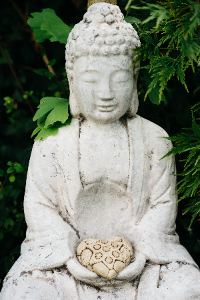Deepening into Meditation
Meets monthly on the third Wednesdays
By donation $0, $5, $10, $15 sliding scale, pay what you can | Please register in advance, a Zoom link and passcode will be provided via confirmation email.
“You begin with ambition of some kind. Then, at a certain stage, meditation becomes instinctive. Then you cannot not meditate – it happens to you.”-Chogyam Trumpa Rinpoche
This ongoing group meets on the 3rd Wednesday of each month to explore and refine aspects of our meditation practices – how we sit, why we sit, and how that relates to our lives. The format consists of a group meditation with some direction, a talk on a related subject and a question/answer session with sharing.
 Prajna took her first yoga class in 1970 in southern California. Later that year she came through the doors of the Berkeley Integral Yoga Institute (IYI), and since that time she has loved Integral Yoga.
Prajna took her first yoga class in 1970 in southern California. Later that year she came through the doors of the Berkeley Integral Yoga Institute (IYI), and since that time she has loved Integral Yoga.
Over the years she has maintained an active involvement in movement, healing, and meditation. She has practiced yoga, tai chi, and various dance forms; co-authored two best selling books on Holistic Health; lived and danced flamenco in southern Spain; and since 2000, has taught Rosen Movement. In 2010, she completed her IYI Teacher Training at Yogaville, VA and began teaching yoga. She brings to her teaching four decades of meditation practice, the last twenty eight in the Buddhist tradition.
Attuning to the wisdom of the body/mind and opening to the present are the foundations of both Prajna’s teaching and personal practice.
Prajna has cooked professionally for many years at retreats centers, cafes and restaurants.



